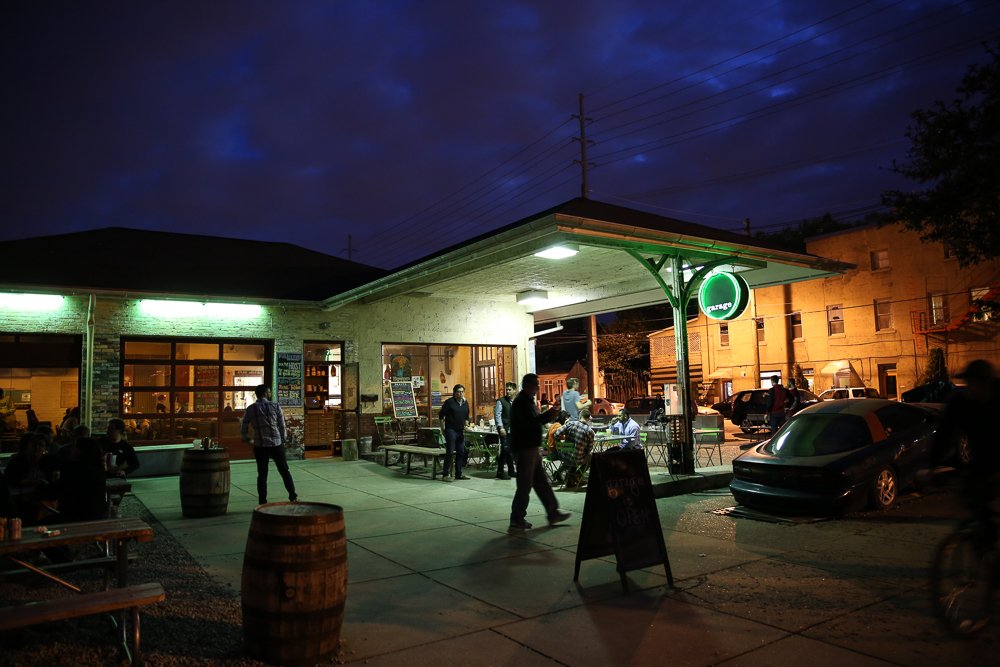Hanging out at the Garage Bar in Louisville back in 2016
It’s been a busy week, especially given that I’m headed out to Kentucky this Sunday for a week of barrel tasting and distillery visits with most of the majors. I’m excited to land in Louisville as I haven’t been to Bourbon Country since the summer of 2019, which seems like an eternity ago after visiting multiple times a year for almost a decade. Louisville has long been one of my favorite places to hang out and I have a lot of wonderful memories attached to it, with its growing number of watering holes and delicious bites. I’m getting hungry and thirsty just thinking about it!
While I’m looking forward to the trip itself, my personal relationship with Bourbon right now is rocky at best. Our romance has been on the decline for a while now, but lately it’s been worse than usual. When you begin to associate one of your favorite beverages with a mindset that no longer appeals to your life’s philosophies, it makes drinking it far less enjoyable. On the whole, I’ve been avoiding Bourbon because it reminds me of the worst aspects of retail.
I’ve always looked at the romance of drinking via a character like James Bond, or the world’s most interesting man. My goal was and has always been to know as much about every liquid as I could, and to use that knowledge to improve my experiences and those of my friends and family. If I walk into an Italian restaurant, I want to know what to order from the wine list to pair with my meal. If I’m at a steakhouse, I want to know the right gin for my Martini. It’s about sophistication, of course, but it’s also quite practical. My ambitions with alcohol never involved being seen as an expert in a single category, but rather as knowledgeable across the board.
The backbar at the Garage in Louisville
What’s interesting to me, however, is that fewer and fewer people I encounter these days look at drinking through the eyes of someone like 007, where a worldly and all-encompassing suave is seen as desirable. Today’s ideal is more like the comic book guy on the Simpsons, where an obsession with a singular nerdism, coupled with a surly, sarcastic demeanor and an almost antagonistic approach to anything less than the best (“worst…whiskey…ever”) seems to be aspirational rather than embarrassing or off-putting (which it should be). But that’s the problem with getting older: subsequent generations have different motivations, which only reminds you of the fact you’re now out of touch.
I remember receiving an email from a customer back in 2016 after I posted the above photo from Louisville with the Garage’s backbar. He had asked me what we were drinking that night and I said something along the lines of: Maker’s 46, Johnny Drum, and Blanton’s. His response went something like this: “Oh man, why waste your time with Maker’s and Johnny Drum when there’s Stagg Jr. and E.H. Taylor available?” In a nutshell, that exchange is the embodiment of the mindset I’m desperately seeking to escape: this idea that at any given time we should be milking the opportunity to drink the rarest whiskies possible, rather than what might be appropriate for the moment.
The enjoyment of whiskey is what made you cool ten years ago, but today it’s what’s in your glass; just like it’s become more important to have Louis Vuitton plastered all over your clothes than to actually look stylish. Yet, I’m hoping that a week in Louisville will remind me of everything I love about Bourbon and that I’ll return with a fresh enthusiasm for what’s afoot in Kentucky. We’ll be live updating via the blog and Instagram site for the entire trip, giving you all the updates on your favorite distilleries like New Riff, Four Roses, Heaven Hill, Maker’s Mark, Angel’s Envy, and other Kentucky mainstays.
The fun starts on Sunday!
-David Driscoll











